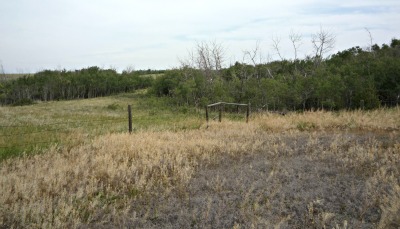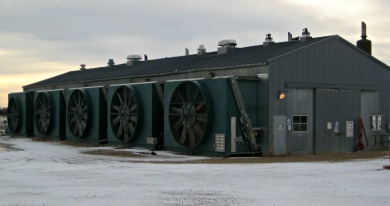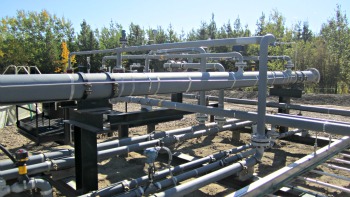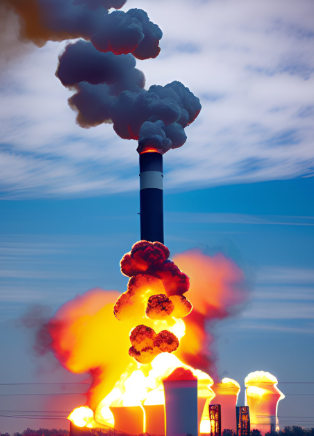- Air Homepage
- Air Quality Testing
- Energy and Environment
Sustainability in Alberta: Balancing Energy and Environment
What's the Alberta government doing to balance energy and environment? Oil has traditionally emitted SO2 gas and other sulphur compounds into the atmosphere, so regulations have been needed to minimize this. There are a lot of technical references in this article.
Discover how Alberta's energy industry is tackling environmental concerns, reducing SO2 emissions, and prioritizing sustainability. Find out how operators are optimizing gas conservation for a cleaner, more efficient energy future by learning about hydrology, chemistry, meteorology, and geology.
The title of the Alberta Energy Regulator (AER) Directive 60 says it all - Upstream Petroleum Industry Flaring, Incinerating, and Venting. The Directive 60 deals with sulphur dioxide emissions (SO2), energy and environmental issues in the Alberta energy industry. Here's the full text - http://www.aer.ca/documents/directives/DraftDirective060.pdf
One of Amoco Canada's wells blew out of control in October 1982. For at least ten weeks afterward, crews tried to stop the 4200 thousand cubic metres per day flow in vain. This crack in the earth, west of Lodgepole, Alberta, emitted extremely rich raw emissions containing 28% hydrogen sulfide gas (H2S), polluting the air. On site, two people died. This led to a lot of new and revised safety regulations.
The modern AER Directive 60 owes a lot to it. The directive regulates energy, environment, incinerating, venting, and flaring releases in Alberta, protecting public and environmental safety.
Among other things, Directive 60 covers oil and gas companies' activities like drilling, testing, production, maintenance, storage, emergencies and cleanup, as well as the use of gas flares. By meeting so-called performance requirements and improving flare efficiency, regulators want companies to eliminate, reduce, and manage flaring.
Sometimes the decision-making flowchart includes public and regulator feedback. Proponents can get help from the AER to design a facility right and communicate certain activities to the Board. Penalties for not doing so are outlined in AER Directive 19: Compliance Assurance.
Alberta Energy and Environment Regulations for solution gas
Hydrocarbon-rich gases dissolved in reservoir liquids start coming out of solution when the pressure drops. Instead of wasting solution gas, the AER wants operators to use it wisely, and the Board provides energy and environment procedures.
If you were running a regulated facility, what should you do? Reduce and/or eliminate flaring, incineration and venting. Conservation is often the best way to do this. What's that? The collection of solution gas for other uses, like fuel for other operations. If conservation is economically feasible, operators should do it.
The AER and Clean Air Strategic Alliance (CASA) came up with these limits to continue reducing flaring and its effects on the supply of energy and resources. Flaring should be limited to 670 e6m3 a year (about 1836 "decks" a day). There may be more drastic reductions if needed.
If the gas burns, flare it instead of venting it. It boils down to the same recurring theme: Eliminate flaring/venting if possible, otherwise reduce this activity if possible. Licensees flaring/venting more than 900 m3/day must follow a specific procedure outlined in Figure 2 of the Directive and show the AER how each step was evaluated. In that case, you'll have to meet the performance requirements in Section 7.
Here's an exception. You might need to follow these additional regulations at many sites in the Wainwright-Lloydminster area (check with the Board or Section 2.4 of Directive 60 for exact locations): Gas flaring during test periods must not last longer than 72 hours (although they MAY allow exceptions). Once the 900 m3/day threshold is exceeded, conservation will be implemented, and operations will be suspended. For energy and the environment, even if sites aren't required to conserve gas, they're encouraged to do so.
Unless they exceed 900 m3/day for three months, bitumen sites in this region can test flare for up to six months. They have to conserve the gas ASAP, and can't go over this limit for 6 months after flow rate determination. These sites (single-surface lease sites with flaring/venting) are repeatedly told by AER: conserve the gas if you can, even if the flaring rate is under 900 m3/day.
For Oil & Bitumen Batteries
Depending on Section 2.5, you need to conserve if:- the total flare/vent volume is 900 m3/day and it's worth at least $50,000,
- if there's at least 3000 times more gas than oil (called the GOR or gas-oil ratio), or
- or if there's a house nearby (500 meters or less) and the flare volume is over 900 m3/day. For new houses going in after the battery starts operating, check with the Board.
The economic ($50K) review has to be done every year. Sites flaring less than 900 m3/day may still need to conserve gas if it's feasible. The licensee can make a case if this doesn't work for their site by filling out a decision tree, telling the Board and nearby residents what their intentions are and following Table 1: Limitations and notification requirements for non-routine flaring, incinerating, and venting during solution gas conserving facility outages. in AER Directive 60.
How does clustering work? It might be possible for operators to get together for an energy and environment meeting, combine their gas volumes, and conserve gas economically. It's at least worth evaluating with nearby industries. This usually starts with the biggest operator. In a multi-well development (or equivalent), this tactic must be considered for all gas sources, no matter how spread out the operations are, and must be included in the application under AER Directive 56.
How can sites use the gas and its energy? The most common choice is power generation. For small plants (less than 1 MW), the regulations are pretty simple. For bigger plants, it's a bit more complicated.
A guide to evaluating the economic potential of gas conservation.
It's a must. Energy and environment operators can look at gas prices, power generation, and other economic indicators. AER Directive 19 will be implemented if a site doesn't comply, and the board will decide if they need to see the documentation. The details are in Section 2.8 of Directive 60, but here's a quick summary.
Dollar amounts for evaluations shall include:
- values calculated before tax,
- Inflation-adjusted resale and power prices,
- Volumes justified using projections,
- Costs of conservation (future only) carefully evaluated,
- Subtracting flaring costs,
- Included is salvage value,
- A reasonable percentage (10 to 20%, depending on H2S content) of initial costs is assigned for estimating operating costs MINUS flaring costs
- Power generation costs are 10% of initial costs
- Calculations based on Alberta's consumer price index
- Rates based on ATB Financial loan interest + 3% (subject to change).
- Benefits include royalty waivers
- If the net present value (NPV) is over $50K, you should conserve
- DATA IS READY FOR AER AUDIT AND REVIEW
How much energy and environment info does a site operator have to give out? There are specific instructions in section 2.9. Flaring, venting, and incineration must be included in applications and public notifications. Residents need to know about upcoming flaring and venting. The AER, Alberta Environment and Protected Areas (AEPA) and nearby residents need to be notified about any unusual flaring or venting.
Here's what they need to know:
- What's being flared, why?
- What regulations are in place,
- How to reduce flaring and maximize efficiency,
- Why this activity was allowed,
- What residents can do if they want to object
- Board, AER, and company contact info.
Flaring and venting aren't always planned. Flaring during downtime should be minimized in the same way as routine flaring; plants can get tips from the AER field centre. If removing flaring isn't possible, you can use prioritization. If there's been an equipment failure and restoration is going on, you can flare up to 2000 m3/day for 5 days or less. Section 2.11 of Directive 60 has details in Table 1.
The rules for planned flaring are stricter. Short periods, less than four hours, would require operators to cut volumes by a half or more, and over four hours, volumes must be cut by 75% compared to average volumes over the last 30 days. Exemptions MAY be allowed by the Board. Depending on the site-specific reporting requirements, nearby residents and the AER field office need to be notified. Also, emergency events under four hours are exempt.
As a result of the implications for energy and the environment, the AER takes plant upsets longer than four hours seriously. In addition to reducing volumes by 75%, facilities must also not flare gases over 10% H2S concentration, or hesitate to make the proper notifications outlined above, and there are occasionally exemptions allowed. Whenever flaring happens too often, operators will have to do site investigations to fix the energy and environment problems.
If the plant has its turnaround shutdown coming up, they can reduce flaring and venting by exporting the solution gas to a neighbouring plant in operation, coordinating turnarounds for all facilities in the immediate network, or even using temporary injection in place of flaring. Other options may be negotiated with the AER if a shut-in would cause undue operator distress or equipment damage, if justified and done at least 30 days before.
What's the formula for calculating flared gas royalties? For more info, check out https://en.wikipedia.org/wiki/Alberta_Royalty_Review. Flared gas gets royalties assessed if it could be conserved instead.
You can report solution gas flares through the Petroleum Registry of Alberta. To report production and flaring, operators need a battery code. Technical operations group provides ST60 and/or ST60A statistical reports for viewing submitted production data. Your site's cooperation is expected if a neighbor wants to use your solution gas for energy and environment conservation.
Air Quality Services
Need help with flare design and calculations? Get in touch with one of Calgary's top energy and consulting companies. Calvin Consulting Group Ltd. specializes in energy-industry air emissions, quantification for reporting and modeling, as well as regulations and solutions.
Please send Barry J. Lough at Calvin Consulting Group Ltd. a message at...
Thank you.
Persuading industry to take care of the environment and energy
What is wrong with Alberta's energy and environment? There is almost daily criticism of the province and its chief industry in international news media.
Can you tell the truth? Here is what you need to know.
===
The Alberta government is trying to balance energy and environment by introducing regulations to reduce sulfur dioxide gas emissions from oil production. These regulations are outlined in Directive 60, which covers how oil and gas companies should operate in order to reduce these emissions and protect public and environmental safety. Companies must meet certain performance requirements and improve flare efficiency in order to reduce emissions. The government oversees this process and companies can be penalized if they do not comply.
Do you have concerns about air pollution in your area??
Perhaps modelling air pollution will provide the answers to your question.
That is what I do on a full-time basis. Find out if it is necessary for your project.
Have your Say...
on the StuffintheAir facebook page
Other topics listed in these guides:
The Stuff in the Air Site Map
And,
Thank you to my research and writing assistants, ChatGPT and WordTune, as well as Wombo and others for the images.
GPT-4, OpenAI's large-scale language generation model, helped generate this text. As soon as draft language is generated, the author reviews, edits, and revises it to their own liking and is responsible for the content.








New! Comments
Do you like what you see here? Please let us know in the box below.